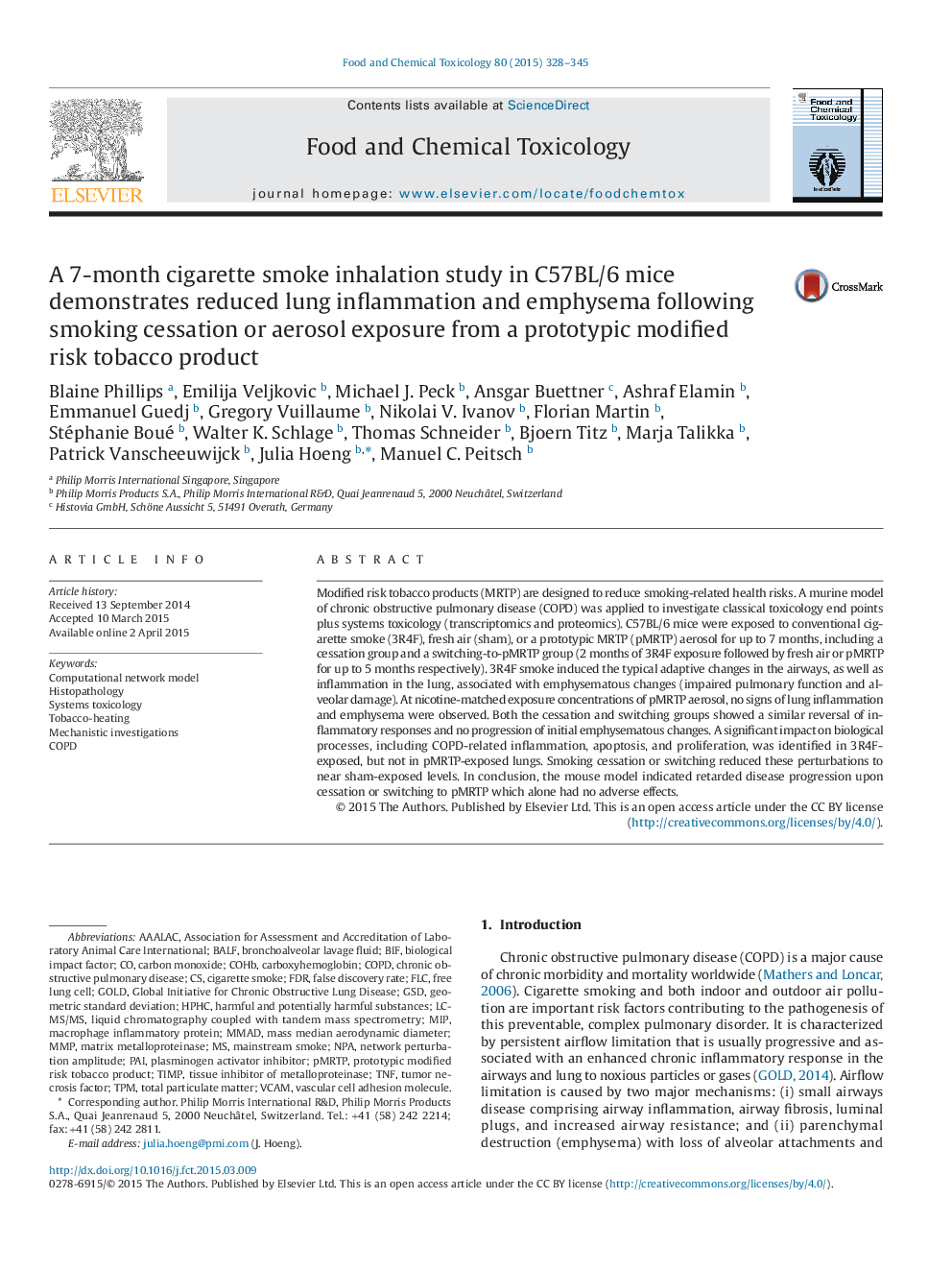| Article ID | Journal | Published Year | Pages | File Type |
|---|---|---|---|---|
| 5849842 | Food and Chemical Toxicology | 2015 | 18 Pages |
â¢Lung inflammation and emphysema increased from 2 to 7 month CS exposure.â¢Cessation reverted most inflammatory processes and halted emphysematous changes.â¢Tobacco-heating MRTP aerosol effects were close to sham exposure.â¢Switching from CS to MRTP caused similar effects as cessation.â¢Systems toxicology approach used to assess a pMRTP.
Modified risk tobacco products (MRTP) are designed to reduce smoking-related health risks. A murine model of chronic obstructive pulmonary disease (COPD) was applied to investigate classical toxicology end points plus systems toxicology (transcriptomics and proteomics). C57BL/6 mice were exposed to conventional cigarette smoke (3R4F), fresh air (sham), or a prototypic MRTP (pMRTP) aerosol for up to 7 months, including a cessation group and a switching-to-pMRTP group (2 months of 3R4F exposure followed by fresh air or pMRTP for up to 5 months respectively). 3R4F smoke induced the typical adaptive changes in the airways, as well as inflammation in the lung, associated with emphysematous changes (impaired pulmonary function and alveolar damage). At nicotine-matched exposure concentrations of pMRTP aerosol, no signs of lung inflammation and emphysema were observed. Both the cessation and switching groups showed a similar reversal of inflammatory responses and no progression of initial emphysematous changes. A significant impact on biological processes, including COPD-related inflammation, apoptosis, and proliferation, was identified in 3R4F-exposed, but not in pMRTP-exposed lungs. Smoking cessation or switching reduced these perturbations to near sham-exposed levels. In conclusion, the mouse model indicated retarded disease progression upon cessation or switching to pMRTP which alone had no adverse effects.
Graphical AbstractDownload full-size image
